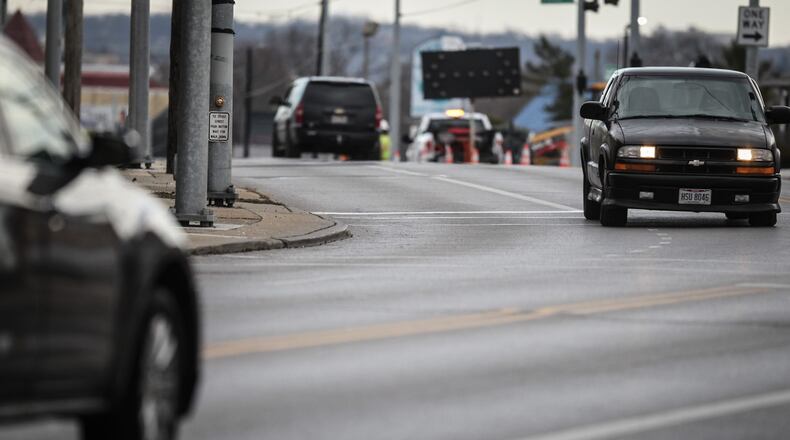The city expects to find out early this year if it will be awarded grant money to help transform the highly traveled corridor by investing in safety upgrades meant to slow down traffic and improve the pedestrian experience.
Auto mobile crashes, pedestrian conditions and crime along North Main Street have been a frequent source of community frustration and citizen complaints.
City staff have spent years gathering community input and developing strategies for cleaning up the area and less dangerous.
“The number one thing we heard from everyone was speed, speed, speed,” said Joe Weinel, chief engineer with the city. “This will definitely slow people down.”
Seeking funds
In early fall, the city of Dayton, the Miami Valley Regional Planning Commission and the Ohio Department of Transportation (ODOT) District 7 sponsored and submitted a safety funding application to the state.
The joint sponsors have requested about $4.7 million from ODOT’s Highway Safety Improvement Program for infrastructure projects that seek to reduce crashes and improve safety along North Main Street, according to an ODOT District 7 spokesperson.
The city proposes a road diet that shrinks North Main Street to three lanes from four. The targeted section of roadway is about 3.5 miles and stretches from Great Miami Boulevard to Shoup Mill Road.
Under the proposal, North Main would have one lane in each direction and a center left-turn lane.
Also, there would be on-street parking south of Fairview Avenue, according to the safety funding application, and north of that intersection would be a striped buffer between the traffic lane and sidewalk.
The city proposes curb extensions (or “bump-outs”) and new high visibility piano key-style crossings. The city also wants to install some rectangular rapid flashing beacons that pedestrians can activate with a push of a button.
“There will be some mid-block crossings,” Weinel said. “There will be a median refuge (traffic islands).”
The curb extensions and eliminating passing lanes will narrow the roadway, which will reduce traffic speeds, he said. New lighting is also planned at intersections.
The redesign project includes the flattening of the curve at the intersection of Santa Clara Avenue, which some residents call dead man’s curve, said Susan Vincent, city of Dayton planner.
“There are definitely design strategies they are putting in place to make that curve safer,” she said.
Unsafe conditions
Between 2017 and 2019, North Main Street had nearly 760 reported crashes between Great Miami Boulevard and Shoup Mill Road, according to a safety and feasibility study.
More than one-third of the crashes involved angled and left turns, and more than a quarter were rear-end collisions, the study found. Dozens of crashes involved pedestrian strikes.
About 18,400 vehicles drive along North Main Street every day.
Lindy McDonough, a local resident, said she hopes reducing traffic to three lanes will slow vehicles down.
She said drivers regularly run red lights in the area, which is extremely dangerous.
“They don’t slow down for yellow or red,” she said. “My husband and I were picking up litter (recently) at Fairview and Main, and someone went right through by the fire station and caused a wreck.”
If the city is awarded ODOT funding, North Main Street project plans would be developed in 2022 and 2023 and construction would take place in 2024, Weinel said.
The city would have to design the project and complete environmental clearances and possibly acquire some property, he said.
The entire project is expected to cost more than $6 million, and the city would likely pitch in more than $1 million, according to the safety fund application.
Although the proposed safety improvements will slow down traffic, it will only take motorists an extra minute or two to travel through the corridor, Weinel said.
About the Author




